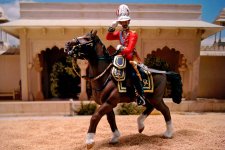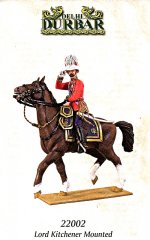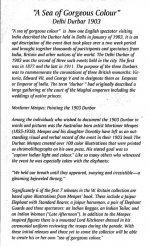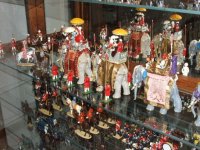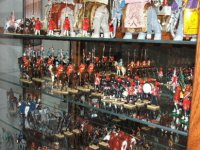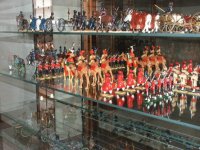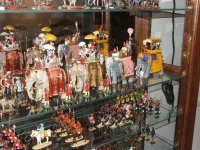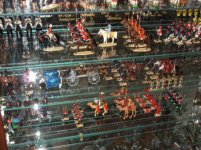Hi Ales,
As Polarbear has stated, all three Delhi Durbar events were ceremonial and they included many forms of celebration. They included lectures, balls, athletic competitions, banquets, and lavish parades. The largest and most spectacular was the 1903 Durbar which was organized by Lord Curzon.
Most of the toy soldier manufacturers have focused on the 1903 Durbar because of its incredible splendor. The 1903 Durbar included three very large parades. The first parade, known as the Arrival Parade, included a total of 166 highly decorated elephants with Princes, Princesses, Maharajahs, Maharani, Warriors, and other significant personalities riding atop the elephants in impressive howdahs. The parades also included large bands, marching soldiers, government officials in coaches, etc.
Several manufacturers have produced figures representing various participants in the parades. Most notibly, W. Britains, Beau Geste, Marlborough, and William Hocker have produced such figures. I collect Durbar figures from all four of the manufacturers I just listed.
W. Britains is in the process of introducing a new line of Durbar figures in matte finish. In the late 1990s, Britains released Durbar figures in a glossy finish. You may easily view the soon to be released Britains matte Durbar figures on the websites of most Britains dealers. However, you will not see the Britains glossy figures as they have all be retired. Consequently, I thought you might enjoy viewing some of the retired glossy Britains Durbar figures in my collection. Below you will find a few photographs of the Britains portion of my Durbar collection. I hope you enjoy viewing them.
Warmest personal regards,
Pat



